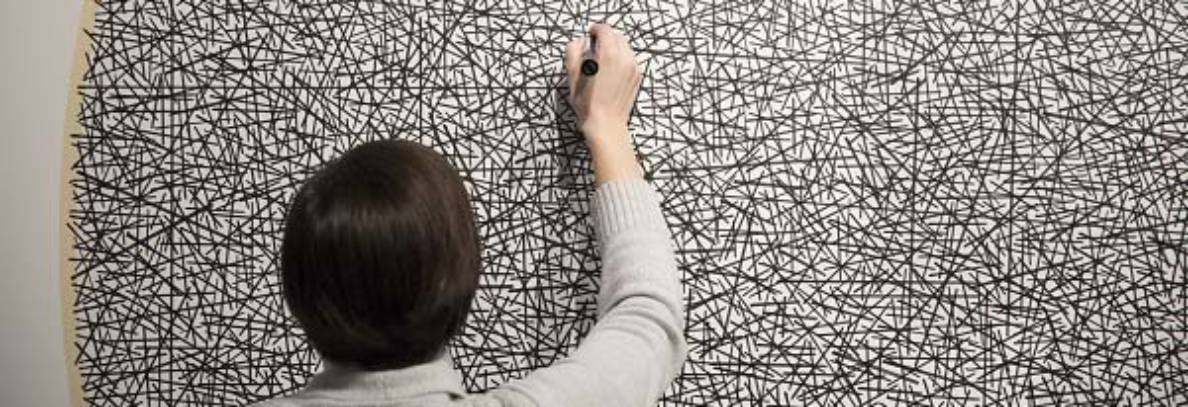Christian Marclay was born in California in 1955, raised in Switzerland and now lives in London. Over the past 30 years, Christian Marclay has explored the fusion of fine art and audio cultures, transforming sounds and music into a visible, physical form through performance, collage, sculpture, installation, photography and video. Marclay began his exploration into sound and art through performances with turntables in 1979, while he was still a student. Early work includes a series of ‘Recycled Records’ (1980-86), fragmented and reassembled vinyl records that became hybrid objects that could be played, replete with abrupt leaps in tone and sound.

Surround Sounds, 2014-15
Video installation
Four silent synchronised projected animations
Duration: 13 minutes and 40 seconds, looped
Source

The Clock, 2010
Christian Marclay’s The Clock is a cinematic tour de force that unfolds on the screen in real time through thousands of film excerpts that form a 24-hour montage. Appropriated from the last 100 years of cinema’s rich history, the film clips chronicle the hours and minutes of the 24-hour period, often by displaying a watch or clock. The Clock incorporates scenes of everything from car chases and board rooms to emergency wards, bank heists, trysts, and high-noon shootouts.

4 channel video projection

Telephones, 1995
Duration: 7 minutes 30 seconds
Video
Christian Marclay’s “Telephones” (1995), a 7 1/2-minute compilation of brief Hollywood film clips that creates a narrative of its own. These linked-together snippets of scenes involve innumerable well-known actors such as Cary Grant, Tippi Hedren, Ray Milland, Humphrey Bogart and Meg Ryan, who dial, pick up the receiver, converse, react, say good-bye and hang up. In doing so, they express a multitude of emotions–surprise, desire, anger, disbelief, excitement, boredom–ultimately leaving the impression that they are all part of one big conversation. The piece moves easily back and forth in time, as well as between color and black-and-white, aided by Marclay’s whimsical notions of continuity.
